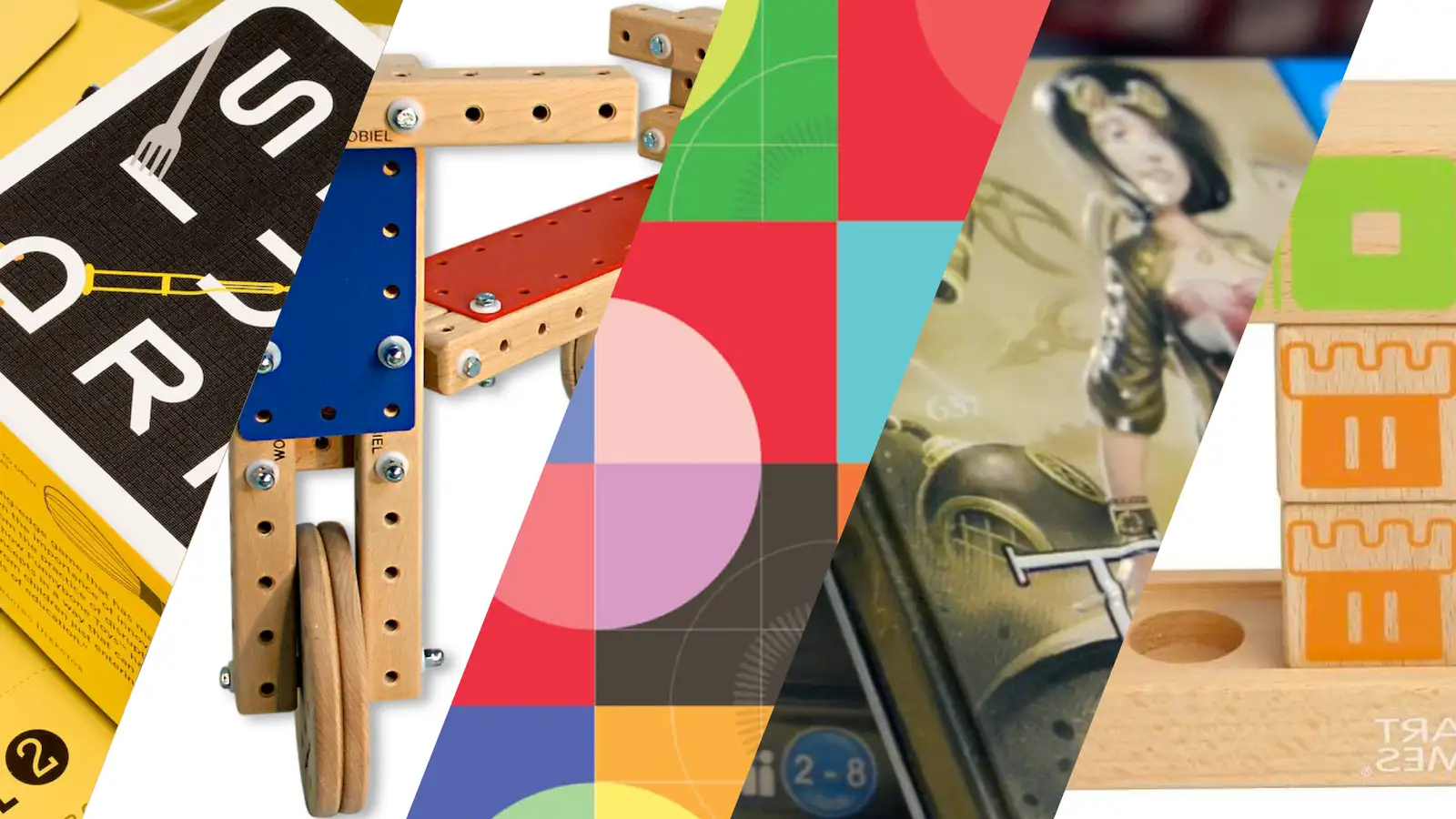This is part four of our holiday gift guide for your Quartziest friends and relatives. Watch for new installments each day this week; collect them all here. (A version of this piece originally appeared on the Toys Are Tools blog.)
Forget Big Hugs Elmo or the LeapPad. Children deserve much more than what’s offered in the so-called educational aisle of toy retailers. In fact, I usually avoid that section altogether. It looks like an assortment of very loud and annoying toys that really do nothing more than what a workbook does.
A toy’s value lies in what a child can do with it. As the possibilities increase, so do the opportunities for development. Great toys and games work naturally on areas such as spatial and logical reasoning (math and science), hand-eye coordination (writing), executive functioning (planning and tweaking projects), and language skills (communication and reading). These core areas, when sharpened, will help prepare children for a future of solving problems that we can’t even possibly imagine. Thankfully, this kind of work will never look like or feel work—and remains the reason play will always be the most effective way to learn.
Best play invention
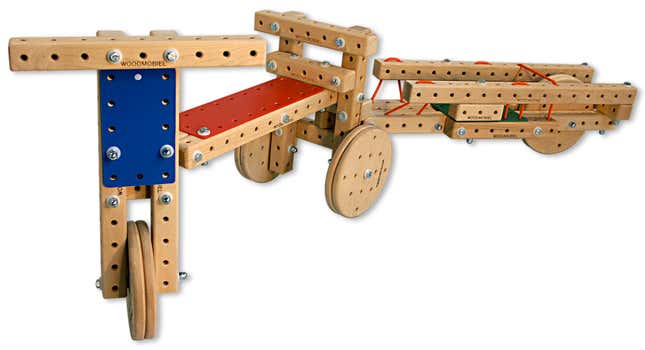
Woodmobiel Standard Kit — ages 5 and up — OOTS — $299
A retired Dutch graphic designer wanted to help his grandchildren build a playhouse but found nothing suitable. Soon he created this modular wooden construction kit that fast became a hit in the Netherlands. Instructions are included, but the standard kit offers limitless variety of play. Woodmobiel’s materials are as beautiful as they are sturdy.
Despite the steep price tag, think of it as a practical toy that can save money if used to build toys that children buy over the years (desk, easel, stool, tent, play house). David Wells, who works at the New York Hall of Science, explains its true value: “It’s a lot different to build a bike and put a doll on it. When you’re sitting on something, there’s a whole sense of pride that goes along with something you’ve made that you use in your everyday life.”
Best game for preschoolers and kindergartners
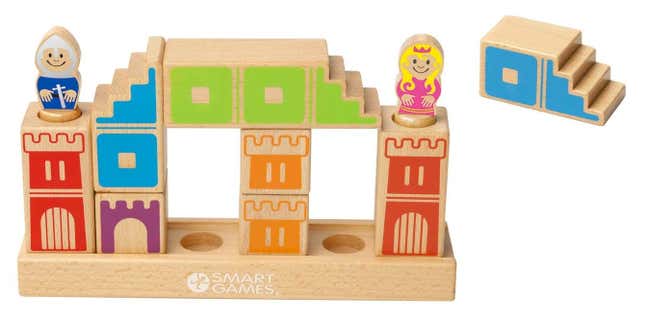
Camelot Jr. — ages 4 and up — Smart Toys and Games — $24.99
I really, really love Camelot Jr. It’s not because I want to be a princess. Like a lot of parents, I actually don’t care for princesses that much. Rather, what I love is that there are two little characters with a goal: the prince has to build his way to the princess using spatial reasoning. (And yes, the princess can save the prince, too.) While a puzzle doesn’t usually need a smiling face to motivate players, the colors, the design, and especially the characters take some of the pressure off being “smart” and put more focus on just solving the problem. Young children know that their wits are being tested here. Additionally, Camelot Jr. is a logic puzzle, of which there are so few for the preschool set. That’s a shame since logic puzzles are an excellent supporter of some critical mathematical and scientific reasoning skills.
The series of 48 challenges that a child must set up to begin play are better suited for an older preschooler or kindergartener. The back side of each challenge has the solution, which allows a child to easily check if he did it correctly. My eldest son, 9, was able to master it rather quickly and asked me to buy him “Camelot Sr.” Sadly, there is no such thing.
Best parenting tool
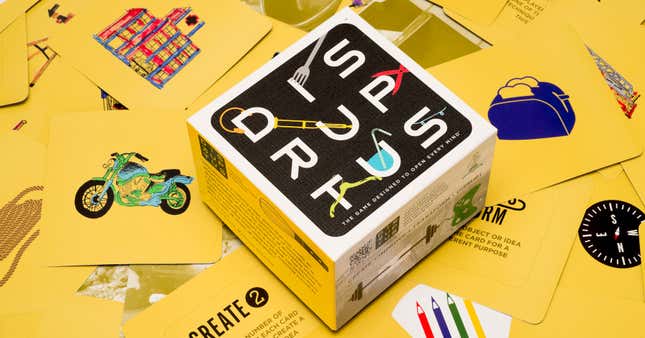
Disruptus — ages 10 and up — Funnybone Toys — $24.99
This game is for the family in search of the better way. Disruptus is a powerful game that uses a little bit of chance and well-designed image cards of everyday things (playgrounds to toilets) to inspire disruptive thinking. To be sure, this is about building creativity in our children while challenging all players to think flexibly and effectively.
It is rare when I say a toy or game for everyone, but this is as close as it gets. Thus, as soon as your child is able to communicate with you, show problem-solving abilities, and has seen a bit of the world, it’s time to play a game of Disruptus. That could be as early as age seven.
Best mental gymnastics toy
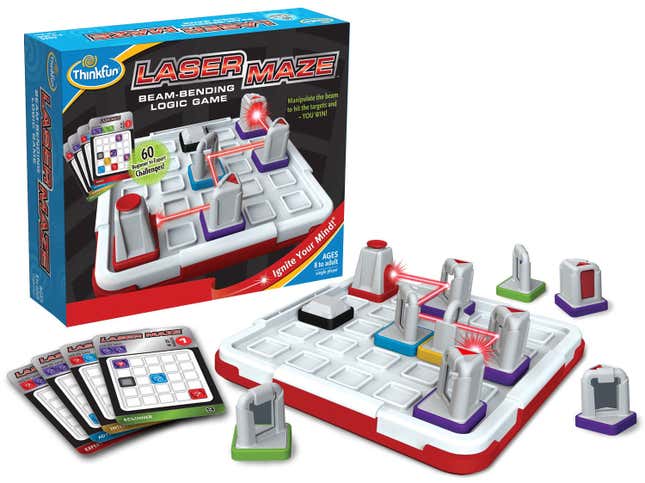
Laser Maze — ages 8 and up — ThinkFun — $29.99
This puzzle requires kids to make executive decisions and plan their next move. As the puzzles increase in difficulty, they are encouraged to think things through and visualize the next steps in advance. I like watching my child solve these problems with his eyes. If I look closely, I can see his eyes darting around. Some kids will draw an imaginary line from one mirror to another mirror and some kids will talk themselves through to work out the solution.
Child development specialist Jonathan Lauter, of the Mount Sinai School of Medicine, says Laser Maze encourages children to think several steps ahead. It sets the stage for planning and organization—all through play. And the laser light show only offers more built-in motivation.
Best artful play

Tobbles Neo — ages 6 months and up — Fat Brain Toys — $26.95
Children love to knock these artful play toys down as soon as their parents set them up. Most toys for this stage are often huge and take up much space in the home, leaving parents feeling overwhelmed. Tobbles Neo solves this problem, and it also grows up with your children. Babies will play with it differently as they grow and build their skills.
When your baby knocks it down after you build it for her, she is learning about gravity and cause-and-effect. When she starts to stack them on her own, she’ll be building the muscles and coordination skills eventually needed to write letters and numbers.
Best build-upon toy
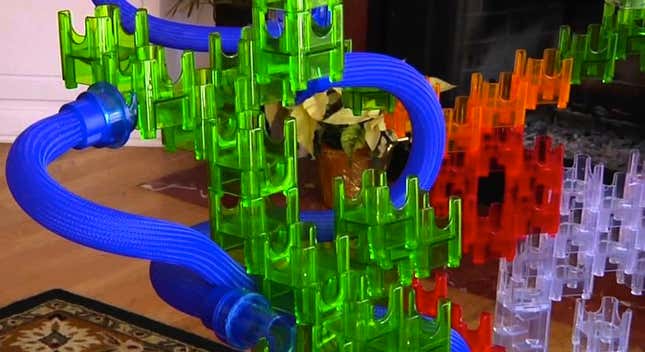
Q-BA MAZE 2.0 Mega Stunt Set — ages 6 and up — Mindware — $87.98
With the introduction of the Q-BA Maze 2.0 Mega Stunt Set and add-on pieces such as “zoom” and “bounce,” one of my favorite building toys has now sharpened its teeth. The stunt set gives you the ability to harness the wonder of Rube Goldberg mazes in a 3D pixel-like format. The action (and fun) comes in various places in your structure, rarely going in just one direction.
Best toy for future designers
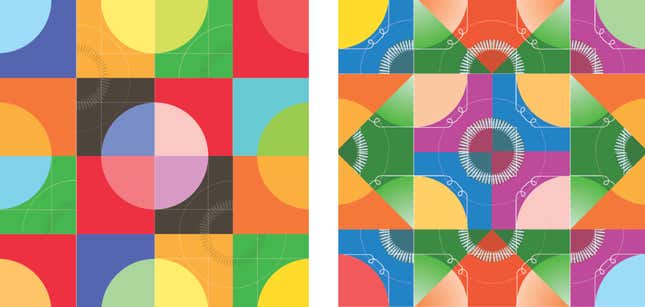
Design Tiles — ages 5 and up — eeBoo — $19.95
I was fascinated by the movie Thinking in Pictures, starring Claire Danes. Not long after, I discovered that my son thought in pictures, too. But I don’t think I really experienced the way in which he thinks visually until I played with Design Tiles. It’s kind of amazing to think in pictures and much faster to think when words are not in your head.
Thinking visually helps kids make sense of the world in a whole new way—figuring out what to wear, how to furnish and decorate their rooms, how to design class projects. Design Tiles allows you to make sense of that process, all without saying a word.
Best game for history geeks
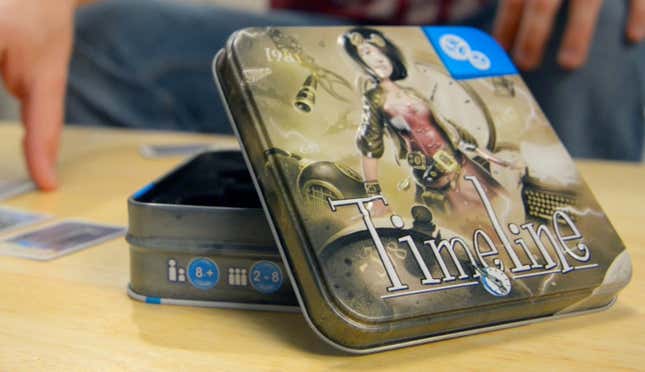
Timeline: Inventions — ages 8 and up — Asmodee — $14.99
My family is full of big-time history geeks, and we love this game, made in France. We haven’t fully reviewed this yet, but please know that we love it so much that we just bought sister games Timeline: Historical Events and Cardline: Animals. (There are more).
To play the game, you don’t have to know when the friction match was invented (1827), but can you figure out if it was invented before or after the invention of the diving suit (1679)? Such questions make it a joy to watch your child use current knowledge of history to figure out the things he doesn’t know. “Well, I don’t know when the telegraph was invented, but it has to have been before the telephone…” You’ll also get them thinking about inventions that are ancient (wheel: 3500 BC) and not-so-ancient (compact disc: 1979).
